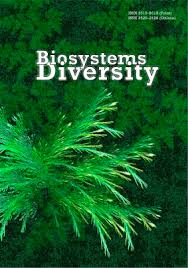Allocation of the diet of the Argentine Islands’ inshore ichthyofauna
Allocation of the diet of the Argentine Islands’ inshore ichthyofauna
Author(s): A. V. Zinkovskyi, I. V. Dykyy, V. N. TrokhymetsSubject(s): Geography, Regional studies, Sociobiology
Published by: Дніпропетровський національний університет імені Олеся Гончара
Keywords: South Ocean; Antarctic Peninsula; Antarctic fish fauna; Notothenia coriiceps; Notothenioidei;
Summary/Abstract: Fish diets are important indicators of ecosystem change. This aspect of the ichthyofauna of the coast of the Argentine Islands has been insufficiently studied in comparison with other regions. This article presents the results of comparison of dietary and somatic parameters of the dominant species Notothenia coriiceps depending on the point, depth and season of catch. The sample was collected between February 2006 and February 2007. In the year of study, N. coriiceps, Trematomus bernacchii, Chaenocephalus aceratus (common species), Harpagifer antarcticus and Pagothenia borchgrevinki (rare species in this region) were caught. The average fish size in this region does not differ from other places in the Southern Ocean. In Cornice Channel and Stella Creek, N. coriiceps was smaller than at other points due to the narrowness and shallow depth of these places. In winter, large individuals apparently migrated from the coast. The diet of N. coriiceps consisted mainly of crustaceans and seaweeds, with a small number of mollusks (especially limpets), which are common. The number of fish in the diet of N. coriiceps is relatively low for this region. Access to food was relatively the same at different points and depths of the catch. The lowest amount of food was in the fall, the highest amount of food was in the spring and summer. The condition and hepatosomatic index also did not change depending on the point and depth of the catch, but they were low in spring and high in summer. Perhaps this is due to the low energy value of food, which is not compensated by the amount. It is necessary to conduct studies of the diet of N. coriiceps in other years to clarify the specificity of fish in the diet and phenological changes in somatic parameters. Similar studies are needed for other species in the region if catches are sufficient to collect a representative sample.
Journal: Biosystems Diversity
- Issue Year: 29/2021
- Issue No: 1
- Page Range: 67-72
- Page Count: 6
- Language: English

